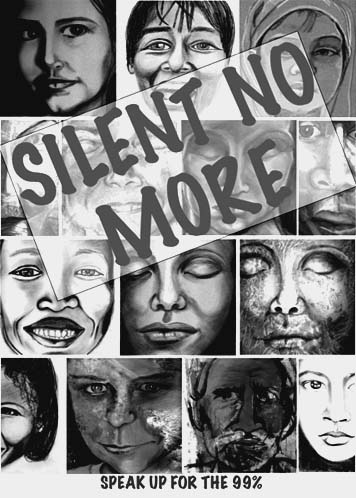by Terry Messman
[dropcap]T[/dropcap]he diametrically opposed strategies of nonviolent resistance versus violent rebellion have seemingly always divided those building social-change movements. The age-old clash between these irreconcilable approaches has erupted anew into a matter of paramount concern for people involved in grass-roots rebellions in the Middle East and in the U.S. Occupy movement.
Many voices are offering counsel to a new generation of activists at this moment, and one of the most thoughtful is George Lakey, a longtime nonviolent activist and trainer who recently authored a fascinating account of how workers in Norway and Sweden created a nonviolent movement that successfully challenged the rule of the big banks and economic elite, and remade their country to serve the 99 percent. [See “How a Nonviolent Struggle by Workers and Farmers in Sweden and Norway Broke the Power of the 1 Percent” in the March 2012 issue of Street Spirit.]
Street Spirit interviewed George Lakey about the most productive strategies for today’s social-change movements when they are pulled in conflicting directions between nonviolent resistance and violent rebellions. Although Lakey has been outspoken in his defense of the great potential of nonviolent movements, he has also advocated building a dialogue with those who promote a diversity of tactics.
Lakey’s long experience with social-change movements reaches back to his arrests during sit-ins in the civil rights movement. He was a trainer for Mississippi Summer, preparing activists to go into a state sweltering with racism and oppression to nonviolently resist segregation.
A lifelong Quaker, Lakey joined with other Quakers to form A Quaker Action Group, which sailed a ship into Vietnam in 1967 that defied the will of the U.S. government in carrying medical supplies for the victims of U.S. bombings.
He taught at the Martin Luther King School for Social Change in Chester, Pa., and cofounded the Movement for a New Society, which trained activists across the nation in nonviolent organizing. As founding director of Training for Change, he trained activists all over the world, including coal miners, homeless people, prisoners, Russian lesbians and gays, Sri Lankan monks, striking steel workers and South African activists.
Lakey founded the Philadelphia Jobs with Peace Campaign, a coalition of labor, civil rights, poverty and peace groups, and was an architect of the Campaign to Stop the B-1 Bomber, which mobilized to gain cancellation of the B-1 in 1977.
A founder of Men Against Patriarchy, Lakey helped build the men’s anti-sexism movement of the mid-1970s. As an activist in the gay liberation movement, he was arrested for civil disobedience at the U.S. Supreme Court when it upheld Georgia’s anti-gay statute.
Lakey is now very involved in environmental issues, working to alleviate the damage caused by mountain-top removal and organizing with Appalachian people to fight the hazards of coal mining.
Lakey has taught peace studies at Swarthmore and Haverford Colleges, Temple University and the University of Pennsylvania. At present, he is a visiting professor in Peace & Conflict Studies at Swarthmore College in Pennsylvania.

Creating a lasting resource for movement activists, Lakey is guiding students at Swarthmore College in creating the Global Nonviolent Action Database, a huge online library of more than 500 global nonviolent campaigns from all around the world. [Visit its website at http://nvdatabase.swarthmore.edu]
David Hartsough, a lifelong peace organizer who directed the Nonviolent Movement Building Program for the American Friends Service Committee and then co-founded the Nonviolent Peaceforce and Peaceworkers, has known Lakey for decades. Hartsough and Lakey have taken part in many protests with the Occupy movement and have been very involved in the debates surrounding nonviolence and the “diversity of tactics.”
Hartsough said, “George Lakey is one of the foremost strategists for building effective and powerful nonviolent movements that I know in the world. And he walks his talk. He’s not just teaching activism — he’s doing it. He has a very skillful way of helping other people grow so they become stronger and more powerful activists themselves.”
Lakey is the father of three children, including two adopted children of mixed racial heritage, and also played the major parental role in raising his grandchildren.
Hartsough said, “George Lakey combines the personal and the political. He’s doing all this work of building nonviolent movements at home and internationally, and at the same time, he’s a very loving father and grandfather who is one of the most devoted parents I’ve every seen in terms of spending time with his children.”
To read the Street Spirit interview with George Lakey, click HERE.
